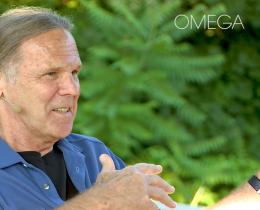Mindfulness is hot. U.S. Congressman Tim Ryan practices it with colleagues on Capitol Hill. The British Parliament is doing it, too. And hundreds of programs teach it to students in schools across the country each day.
But not everyone is on board, as Fiona Jensen discovered firsthand when one of the schools she works with found itself on the receiving end of a potential lawsuit.
Jensen is founder and executive director of Calmer Choice, a community-based nonprofit in Massachusetts that runs programs in schools to help kids reduce stress, build resiliency, and increase well-being. In the fall of 2015, Calmer Choice was accused by a parent and school board member of crossing the lines of church and state and potentially putting kids at risk by teaching them mindfulness practices.
Eventually the case was dropped, but as Jensen reached out to others in the mindfulness in schools community for support, she consistently heard, “We’ve been waiting for this to happen.” Through her conversations it became clear that there was an interest among the community in getting together to discuss the situation further.
Working Group Meets to Discuss Strategy
In June, Omega welcomed a group of more than 20 thought leaders for a self-directed retreat to look at teaching mindfulness in schools and discover what could be learned from Calmer Choice’s experience. The group included researchers, educators, religious scholars, and a lawyer, as well as representatives from nonprofits, the public, and the media.
Using Calmer Choice’s curriculum as a case study, Jensen explained, “We wanted to know what is in here that can potentially offend and why, so that we can have a deep understanding and can really hold that with integrity. If we don’t know where the landmines are, we’re going to step on them.”
To do this they reached out to, among others, Candy Gunther Brown, a religious scholar who has testified against having overtly religious yoga in the classroom. She provided information that helped guide some of the discussion during the two days.
The group looked at specific practices and curricula and discussed what might be perceived as violating the separation of church and state.
For example, when talking about teaching lovingkindness in the classroom, Adria Kennedy, Calmer Choice’s program director, said that it’s a practice the kids love doing, but it would likely not pass the litmus test. “It becomes a question of whether you can do it without using the terms or having the repetitive phrasing, because it’s the phrasing that makes it become like a mantra,” she said.
Some organizations have dropped the lesson from their curriculum, while others, like Calmer Choice, have substituted it for a lesson on gratitude and generosity. But Jensen suggests because the science indicates it’s the repetition that changes the neural pathways, there may be a question of potency when you begin to change exercises.
As the group examined different practices through this lens, they were able to start to categorize them. “We created a concentric circle diagram where the inside circle included exercises that would be safe to teach, like 5-fingered breathing and engaged attention. The next circle included exercises that might be okay, depending on your delivery and geographic location. The outside circle included exercises to avoid, like using Tibetan bowls, namaste hands, mudras, mantras, and anything that might be associated with religion.”
The group also took a hard look at what their intention is for bringing these practices to kids.
“What we really want to do is build resilience in kids and equip them for this world that’s on fire 24/7...so we’re really looking at what we do so it can be done in a way that is truly nonoffensive and completely secular,” said Jensen.
The group is considering creating a Mindfulness in Education coalition to help continue to guide these conversations. They are also planning to distill their notes into a short document they can share with others doing this work.
To stay informed or get involved, contact Fiona Jensen at fjensen@calmerchoice.org.
Back Row of Photo
Sheryl Petty, EdD, education equity and systems change consultant
Tom Roepke, New York City school teacher
David Troutman, Calmer Choice Board Chair
Randy Fernando, executive director of Mindful Schools
Clemens Bauer Hoss, MD, PhD, Department of Brain and Cognitive Sciences at MIT
Daniel Rechtschaffen, therapist and originator of the Mindfulness & Education Conference
Michael Crowley, PhD, assistant professor in the Child Study Center at Yale
Front Row of Photo
Adria Kennedy, RN/NP, MSN, program director at Calmer Choice
Fiona Jensen, OTR/L, executive director at Calmer Choice
Janice Houlihan, MEd, cofounder of Inner Explorer
Laura Bakosh, PhD, cofounder of Inner Explorer
Leslie Booker, teacher at Lineage Project
Susan Kaiser Greenland, JD, cofounder of Inner Kids
Sunny Wight, founder and executive director of Mindfulness First
Linda Lantieri, founding member of Collaborative for Academic, Social, and Emotional Learning
Lori Gustafson, MS, senior outreach specialist at the Center for Healthy Minds at the University of Wisconsin-Madison
Jane Hsu, principal at PS 116 in New York City
Chris Willard, PSYD, psychologist and author
Missing From Photo
Ali Smith, cofounder of Holistic Life Foundation
Michael Craft, business and program development strategist at Omega
Mikyö Clark, producer
Larry Brown, teacher at Cape Cod Academy
Garrett “Dinabandhu” Sarley, launch manager and project consultant for 1440
Rev. Samuel Speers, DMin, assistant dean of the College for Campus Life and director of Religious and Spiritual Life at Vassar College



